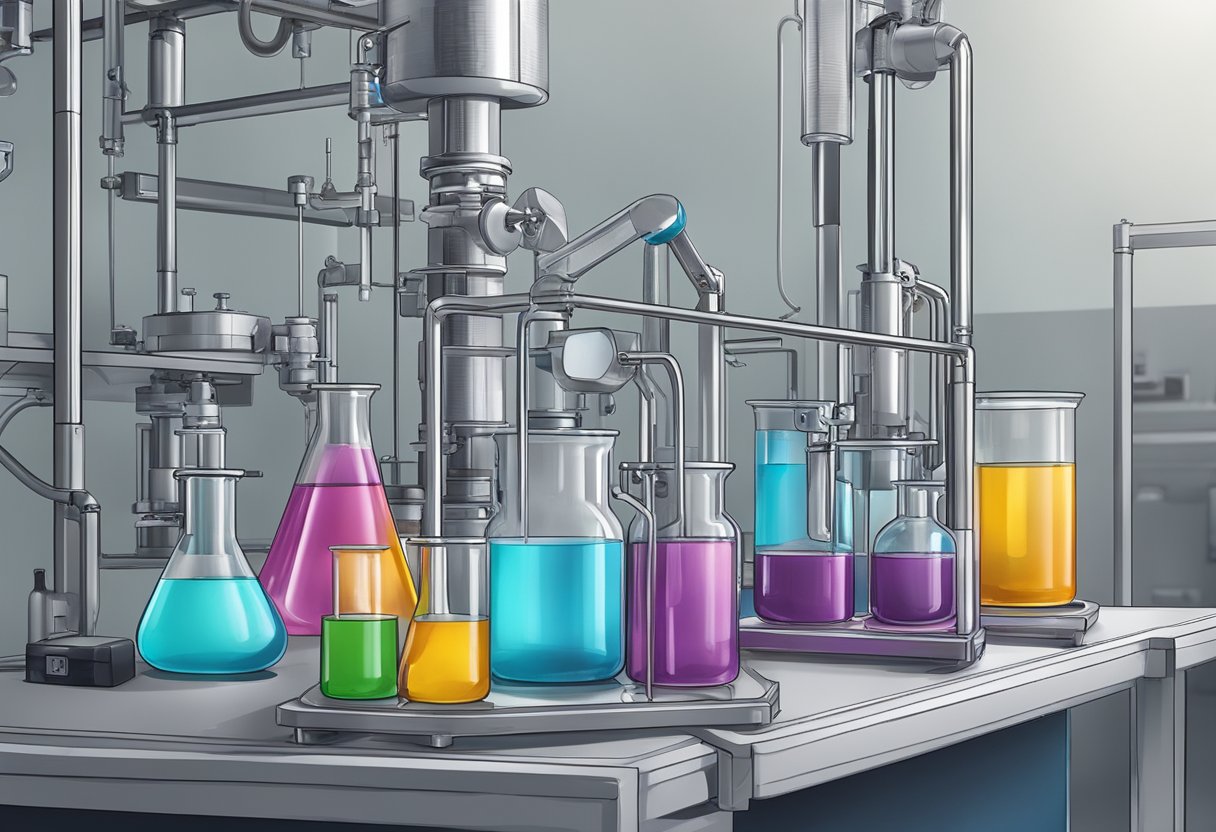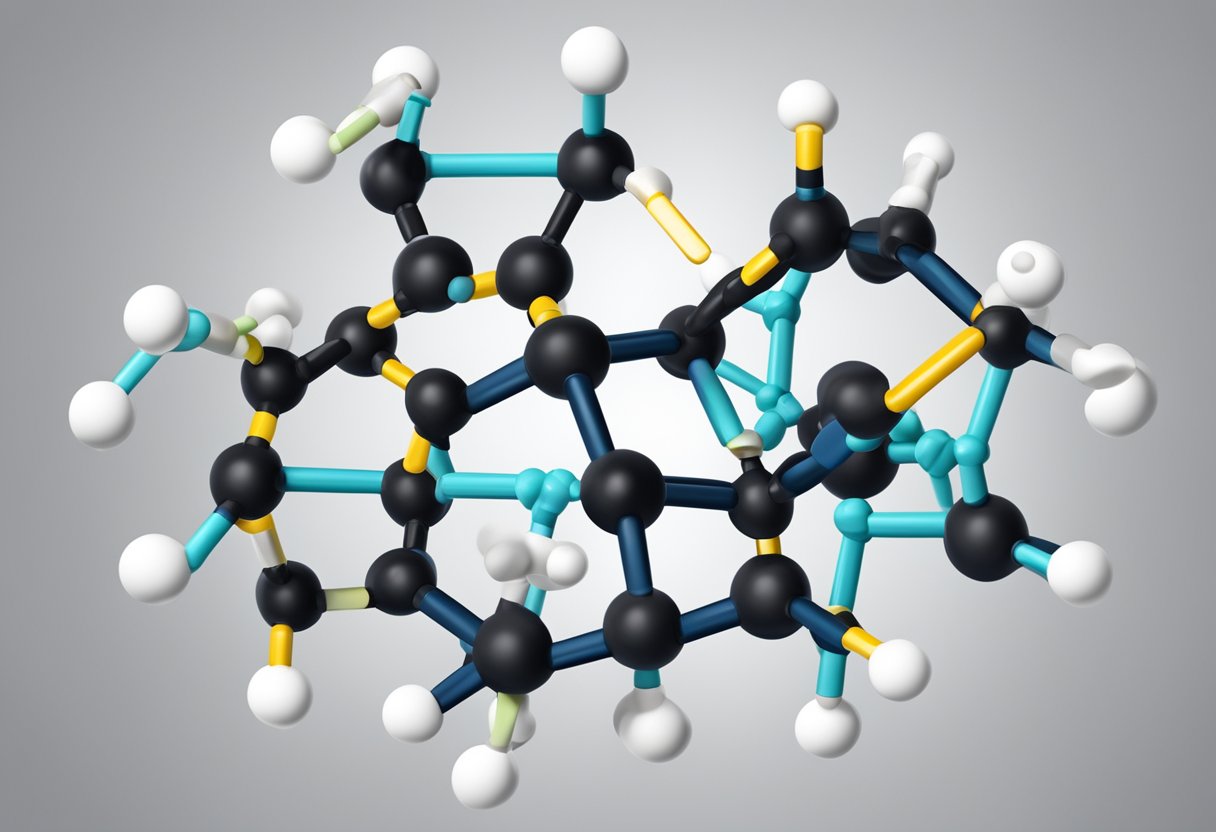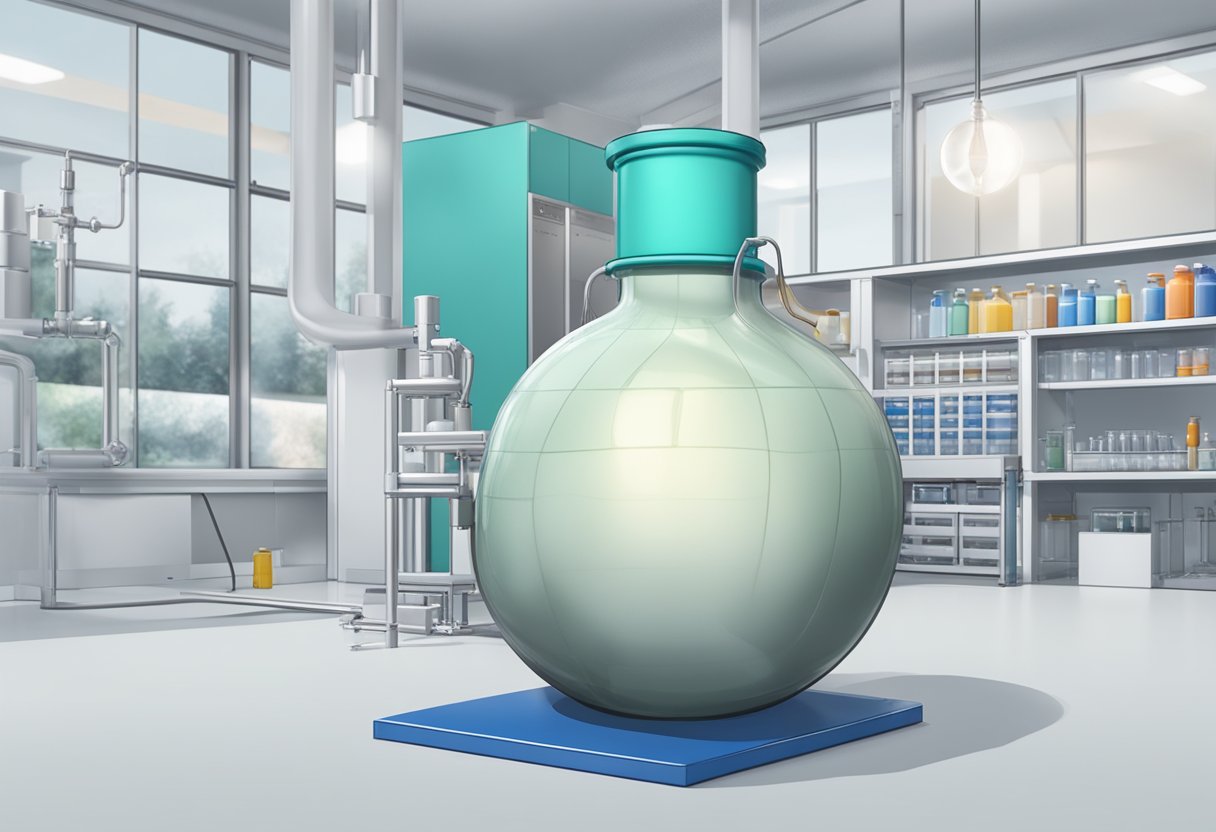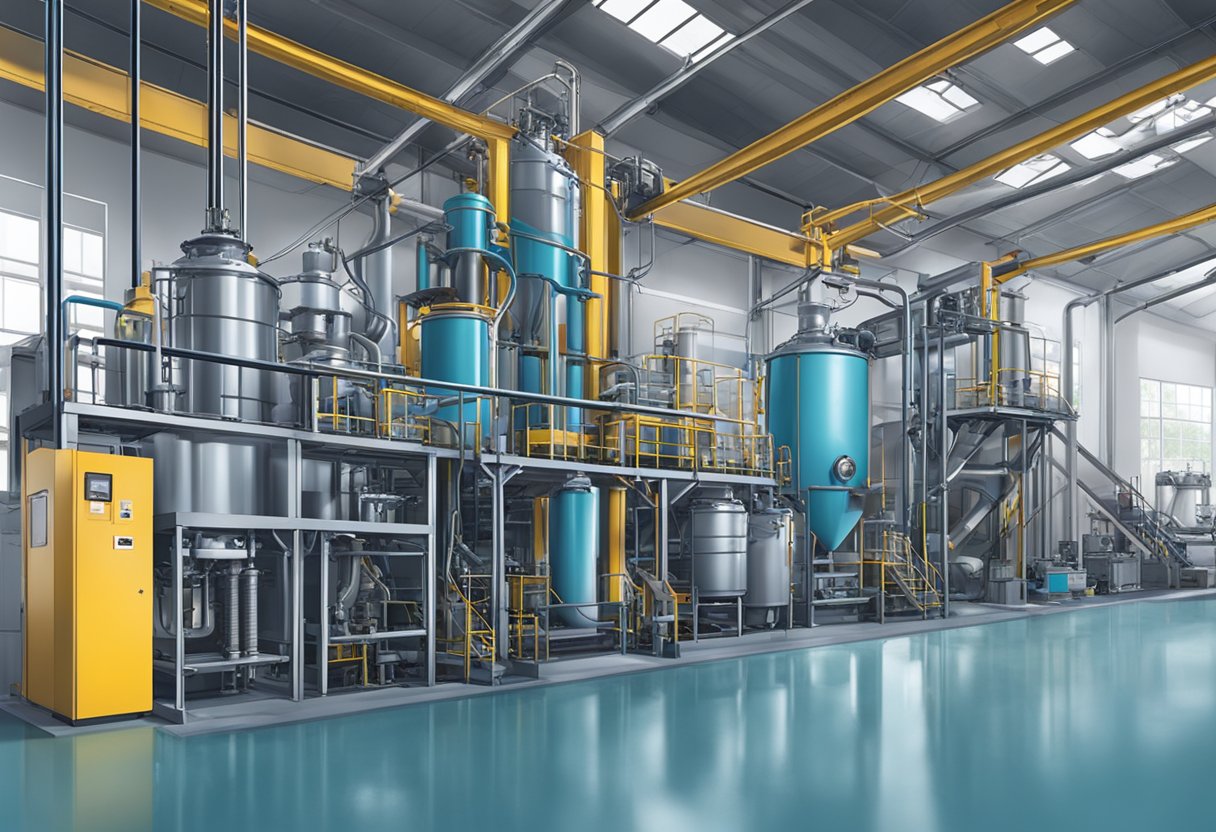Carboxylated Nitrile Butadiene Rubber: Properties and Applications
19/01/2024
Carboxylated nitrile butadiene rubber (XNBR) is a synthetic rubber that is widely used in various industries due to its excellent mechanical properties and resistance to chemicals and heat. XNBR is a type of nitrile rubber that has been modified by the addition of carboxylic acid groups, which improves its compatibility with polar materials and enhances its bonding strength.

XNBR is commonly used in applications that require high strength, durability, and resistance to harsh environments. It is often used in automotive and aerospace industries for sealing and gasket applications, as well as in the oil and gas industry for hoses and seals that can withstand exposure to harsh chemicals and extreme temperatures. XNBR is also used in the production of conveyor belts, rollers, and other industrial products that require high abrasion resistance and low compression set.
Overall, XNBR is a versatile and reliable material that offers a range of benefits for various applications. Its unique properties make it an ideal choice for industries that require high performance and durability in challenging environments. With ongoing research and development, XNBR is expected to continue to play a significant role in the manufacturing of high-performance rubber products.
Chemical Structure of Carboxylated Nitrile Butadiene Rubber

Monomer Composition
Carboxylated Nitrile Butadiene Rubber (XNBR) is a synthetic rubber that is produced by the copolymerization of butadiene, acrylonitrile, and carboxylic acid monomers. The butadiene and acrylonitrile monomers provide the backbone of the polymer, while the carboxylic acid monomer provides the carboxyl groups that are essential for the carboxylation process. The composition of the monomers used in the production of XNBR can be varied to achieve different properties, such as increased oil resistance or improved low-temperature performance.
Carboxylation Process
The carboxylation process involves the addition of carboxylic acid groups to the polymer backbone of Nitrile Butadiene Rubber (NBR). This process is achieved by reacting NBR with a carboxylic acid anhydride in the presence of a catalyst. The reaction results in the formation of carboxylated NBR, which has improved properties such as increased adhesion, improved low-temperature performance, and improved mechanical properties.
The carboxylation reaction can be controlled to achieve different levels of carboxylation, which affects the properties of the resulting XNBR. Higher levels of carboxylation result in improved adhesion and low-temperature performance, while lower levels of carboxylation result in improved mechanical properties and oil resistance.
In summary, XNBR is a copolymer of butadiene, acrylonitrile, and carboxylic acid monomers that undergoes a carboxylation process to improve its properties. The composition of the monomers used and the level of carboxylation can be varied to achieve different properties, making XNBR a versatile material for various applications.
Properties of Carboxylated Nitrile Butadiene Rubber

Physical Properties
Carboxylated Nitrile Butadiene Rubber (XNBR) is a synthetic elastomer that is known for its excellent resistance to abrasion, oil, and heat. It exhibits good tensile strength, elongation, and tear resistance. XNBR has a high degree of cross-linking, which imparts excellent resilience and resistance to compression set.
XNBR has a lower compression set than Nitrile Butadiene Rubber (NBR) and can operate at higher temperatures. It can be compounded to meet a wide range of physical properties, making it an excellent choice for a variety of applications.
Chemical Resistance
XNBR exhibits excellent resistance to oil, fuel, and grease. It also has good resistance to acids, bases, and alcohols. However, it is not recommended for use with ketones, esters, and aromatic hydrocarbons.
Thermal Stability
XNBR has excellent thermal stability and can operate at temperatures up to 150°C. It exhibits good resistance to oxidation and does not degrade when exposed to high temperatures.
In summary, XNBR is a versatile elastomer that offers excellent physical properties, chemical resistance, and thermal stability. Its unique combination of properties makes it an ideal choice for a wide range of applications, including automotive, industrial, and aerospace.
Manufacturing Process

Polymerization Methods
Carboxylated nitrile butadiene rubber (XNBR) is produced through emulsion polymerization, a process that involves the reaction of butadiene and acrylonitrile monomers in an aqueous medium. The polymerization is initiated by a free radical initiator, which generates free radicals that attack the double bonds in the monomers and start the chain reaction. The reaction is carried out under controlled conditions of temperature, pressure, and pH, and the resulting latex is stabilized with surfactants.
The composition of the monomer feed, the reaction conditions, and the type and amount of surfactants used can be varied to control the properties of the resulting XNBR. For example, increasing the amount of acrylonitrile in the feed increases the polarity of the polymer, which can improve its oil resistance and low-temperature flexibility. On the other hand, increasing the amount of butadiene in the feed increases the elasticity of the polymer, which can improve its tear strength and abrasion resistance.
Post-Polymerization Modifications
After the XNBR is polymerized, it can be modified by various post-polymerization techniques to further enhance its properties. One common modification is carboxylation, which involves the reaction of the XNBR with carboxylic acid or its anhydride. The carboxylation reaction introduces carboxyl groups onto the polymer backbone, which can improve its adhesion to metals and other substrates.
Other post-polymerization modifications include sulfonation, hydrogenation, and crosslinking. Sulfonation introduces sulfonic acid groups onto the polymer backbone, which can improve its acid resistance and electrical conductivity. Hydrogenation reduces the amount of unsaturation in the polymer, which can improve its heat resistance and chemical stability. Crosslinking increases the degree of intermolecular bonding in the polymer, which can improve its mechanical properties and resistance to swelling.
Applications of Carboxylated Nitrile Butadiene Rubber
Automotive Industry
Carboxylated Nitrile Butadiene Rubber (XNBR) has various applications in the automotive industry. It is used in the manufacturing of engine mounts, hoses, and seals. XNBR is known for its excellent resistance to heat, oil, and chemicals, making it an ideal material for automotive applications. Additionally, XNBR has good compression set properties, which means it can maintain its shape over time, even under high pressure. This makes it a reliable material for use in automotive gaskets, seals, and other components.
Oil and Gas Industry
XNBR is also used in the oil and gas industry due to its excellent resistance to oil, gas, and chemicals. It is commonly used for seals and gaskets in oil drilling equipment and pipelines. XNBR has a high resistance to abrasion and wear, making it ideal for use in harsh environments. It can withstand extreme temperatures and pressure, making it a reliable material for use in oil and gas applications.
Seals and Gaskets
XNBR is widely used for seals and gaskets in various industries due to its excellent resistance to oil, chemicals, and high temperatures. It is commonly used in the manufacturing of O-rings, gaskets, and seals for engines, pumps, and other machinery. XNBR has a good resistance to compression set, which means it can maintain its shape over time, even under high pressure. This makes it a reliable material for use in seals and gaskets that need to maintain their shape and function over time.
In conclusion, Carboxylated Nitrile Butadiene Rubber (XNBR) has various applications in different industries due to its excellent resistance to heat, oil, and chemicals. XNBR is commonly used in the manufacturing of automotive components, oil and gas equipment, and seals and gaskets. Its unique properties make it a reliable material for use in harsh environments.
Comparison with Standard Nitrile Rubber
Performance Advantages
Carboxylated nitrile butadiene rubber (XNBR) offers several advantages over standard nitrile rubber (NBR) in terms of performance. XNBR has better resistance to heat and chemicals, which makes it ideal for use in harsh environments. It also has better resistance to abrasion and tear, making it suitable for use in applications where durability is essential.
XNBR has a higher tensile strength than NBR, which means it can withstand higher stresses and strains without breaking. It also has better compression set resistance, which means it can maintain its shape and performance even after being subjected to compressive forces for extended periods.
Cost Implications
While XNBR offers several performance advantages over NBR, it is more expensive to produce. This is because XNBR requires additional processing steps to introduce the carboxyl groups into the polymer chain. As a result, XNBR is typically more expensive than NBR.
However, the superior performance of XNBR can often justify the higher cost. For applications where durability and resistance to heat and chemicals are critical, XNBR can provide a cost-effective solution in the long run.
Additives and Fillers
Reinforcement Agents
Carboxylated nitrile butadiene rubber (XNBR) can be reinforced using a variety of agents, including carbon black, silica, and clay. Carbon black is a popular choice due to its low cost and ability to improve mechanical properties such as tensile strength and abrasion resistance. Silica is also commonly used as a reinforcement agent, as it can improve tear strength and reduce rolling resistance. Clay is another option, as it can improve stiffness and dimensional stability.
Plasticizers
Plasticizers can be added to carboxylated nitrile butadiene rubber to improve its flexibility and processing characteristics. Common plasticizers used in XNBR include paraffinic oils, naphthenic oils, and ester plasticizers. Paraffinic oils are often preferred due to their low volatility and good compatibility with XNBR. Naphthenic oils can also be used, but they may cause blooming and discoloration. Ester plasticizers are less commonly used due to their higher cost, but they can provide excellent low-temperature flexibility.
Overall, the selection of additives and fillers for carboxylated nitrile butadiene rubber will depend on the specific application and performance requirements. It is important to carefully consider the properties of each additive and filler, as well as their compatibility with XNBR, in order to achieve optimal performance.
Processing Techniques
Molding
Carboxylated nitrile butadiene rubber (XNBR) can be molded into various shapes and sizes using different molding techniques. Compression molding is the most commonly used technique for XNBR due to its high viscosity. The process involves placing the XNBR compound into a mold cavity and applying pressure and heat to form the desired shape. Injection molding can also be used for XNBR, but it requires higher processing temperatures and pressures.
Extrusion
Extrusion is another common processing technique for XNBR. It involves forcing the XNBR compound through a die to form a continuous profile or sheet. XNBR can be extruded at relatively low temperatures and pressures, making it a cost-effective option for producing long lengths of material. However, the high viscosity of XNBR can make extrusion challenging, and specialized equipment may be required.
Calendering
Calendering is a process that involves passing XNBR through a series of rollers to form a continuous sheet or film. This technique is commonly used to produce XNBR sheets with uniform thickness and smooth surfaces. Calendering can be performed at relatively low temperatures, but high pressures are required to achieve the desired thickness and surface finish. XNBR sheets produced by calendering can be used in a variety of applications, including gaskets, seals, and diaphragms.
In summary, XNBR can be processed using a variety of techniques, including compression molding, injection molding, extrusion, and calendering. Each technique has its advantages and disadvantages, and the choice of technique depends on the specific application and production requirements.
Regulatory and Environmental Considerations
Compliance Standards
Carboxylated nitrile butadiene rubber (XNBR) is a synthetic elastomer that is used in a variety of applications including automotive, oil and gas, and industrial. XNBR is regulated by various compliance standards, including REACH (Registration, Evaluation, Authorization and Restriction of Chemicals) and RoHS (Restriction of Hazardous Substances).
REACH is a European Union regulation that requires manufacturers and importers of chemicals to register their products and provide information on their potential risks to human health and the environment. XNBR is listed on the REACH candidate list of substances of very high concern (SVHC) due to its potential to cause skin sensitization. Manufacturers and importers of XNBR are required to comply with REACH regulations and provide information on the safe use and handling of the substance.
RoHS is a directive that restricts the use of certain hazardous substances in electrical and electronic equipment. XNBR is not currently listed as a restricted substance under RoHS, but manufacturers and importers should be aware of potential changes to the directive and ensure compliance if necessary.
Recycling and Disposal
XNBR is not biodegradable and should not be disposed of in landfills or incinerated. Recycling of XNBR is possible through mechanical or chemical processes. Mechanical recycling involves shredding and grinding the material into small particles that can be used in the production of new products. Chemical recycling involves breaking down the material into its constituent parts and reusing them in the production of new materials.
It is important for manufacturers and users of XNBR to consider the environmental impact of the material and take steps to reduce waste and promote recycling. Proper handling and disposal of XNBR can help to minimize its impact on the environment.
Market Trends and Future Outlook
Demand Analysis
Carboxylated nitrile butadiene rubber (XNBR) is a high-performance elastomer with excellent resistance to heat, oil, and chemicals. The demand for XNBR is expected to grow in the coming years due to its superior properties and increasing applications in various end-use industries such as automotive, aerospace, and oil & gas.
The automotive industry is the largest consumer of XNBR, and the increasing demand for fuel-efficient vehicles is expected to drive the demand for XNBR in the automotive sector. XNBR is used in the production of fuel hoses, seals, gaskets, and other automotive components that require high resistance to oil and fuel.
The aerospace industry is also a significant consumer of XNBR, where it is used in the production of seals, gaskets, and other components that require high resistance to heat and chemicals. The increasing demand for lightweight and fuel-efficient aircraft is expected to drive the demand for XNBR in the aerospace sector.
Technological Advancements
The XNBR market is witnessing significant technological advancements, with manufacturers focusing on developing new grades of XNBR with improved properties. The development of new grades of XNBR with higher tensile strength, abrasion resistance, and oil resistance is expected to drive the demand for XNBR in various end-use industries.
The use of nanotechnology in the production of XNBR is also expected to drive the demand for XNBR in the coming years. Nanoparticles of various materials are being used to improve the properties of XNBR, such as its mechanical strength, thermal stability, and chemical resistance.
In conclusion, the demand for XNBR is expected to grow in the coming years due to its superior properties and increasing applications in various end-use industries such as automotive, aerospace, and oil & gas. The market is witnessing significant technological advancements, which are expected to drive the demand for XNBR further.
Challenges and Limitations
Material Limitations
Carboxylated nitrile butadiene rubber (XNBR) has some limitations that can affect its performance in certain applications. One of the main limitations is its poor resistance to hydrocarbons, which can cause swelling and loss of physical properties. This material is also less resistant to heat and ozone than other types of rubber, which can limit its use in high-temperature or outdoor environments. Additionally, XNBR can be more expensive than other rubbers due to its specialized properties and production process.
Operational Challenges
In addition to its material limitations, XNBR can present some operational challenges during processing and use. The high viscosity of this material can make it difficult to process, requiring specialized equipment and longer mixing times. This can increase production costs and lead to longer lead times for finished products. XNBR can also be more difficult to bond to other materials, which can limit its use in certain applications that require strong adhesion.
Overall, while carboxylated nitrile butadiene rubber has many desirable properties for certain applications, its limitations and operational challenges must be carefully considered before selecting it for use.




